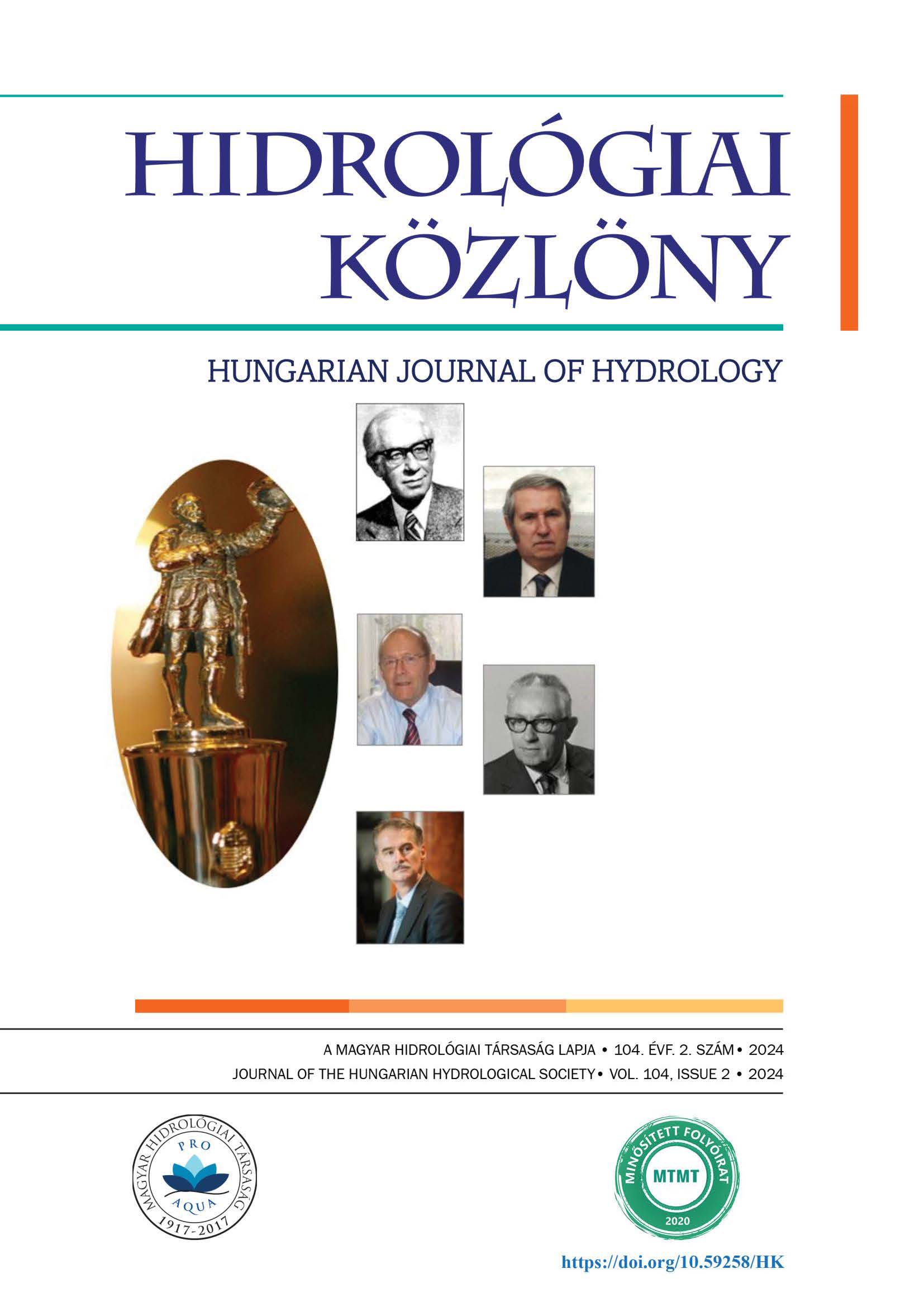The method of images applied to determine the size of backfills to protect drinking water base in the neighbourhood of gravel pits
Abstract
The evaporation of gravel pits is recharged from the groundwater, which causes increasing flow and a drawdown in the neighbourhood of the pits. This effect can reach the protection zone of drinking water wells established earlier. The borders of the protection zone are usually determined based on the travel or residence time of the water to reach the well. If a new water surface, e.g. a gravel pit appears near the well, this travel time will of course reduce. To restore it, a properly placed and sized backfill can be applied. For the backfill usually a certain amount of dredging waste is provided. This waste is usually of finer grains than the gravel and not suitable as building material. In an earlier paper we introduced a simple solution to determine the main parameters of the backfill, but it may be applied only in case of parallel flow, further to the well. In this work we introduce a method based on the theory of image wells that is suitable to estimate the size of the backfill even in the close vicinity of the wells to restore the residence time.
References
Altnőder A., Aujeszky G., Scheuer Gy. (1989). Dunaföldvár-déli országhatár közötti Duna-jobbparti partiszűrésű vízszerzés lehetőségei. Hidrológiai Közlöny 69. évf. 3. szám, pp. 159-167.
Aujeszky G., Petz R., Sajgó Zs., Scheuer Gy. (1990). Új partiszűrésű vízbázis a Duna bal partján Tassnál. Hidrológiai Közlöny 70. évf. 3. szám,, pp. 162-172.
Bear, J. (1972). Dynamics of Fluids in Porous Media. American Elsevier Publishing Company Inc. New York
Bear, J. (1979). Hydraulics of Groundwater. McGraw-Hill Inc. New-York.
Bogárdi J. (1979). Hidromechanika. Egyetemi jegyzet, J9-945. Tankönyvkiadó, Budapest.
Busch, K.F., Luckner, L. (1972). Geohydraulik. VEB Deutscher Verlag für Grundstoffindustrie, Leipzig.
Csiszár E. (2020). Kihívások a Tass, Gudmon-foki parti szűrésű regionális vízbázis üzemeltetésében. Hidrológiai Közlöny 100. évf. 1. szám, pp. 70–79.
Csoma R. (2023). A szivárgási tényező jelentősége kavicsbányatavak hatásvizsgálata esetén. Hidrológiai Közlöny 103. évf. 4. szám, pp. 52-62. https://doi.org/10.59258/hk.13174
Csoma R., Wagner F. (2021). A talajvízmozgás modellezése külműveléses kavicsbányák esetén. Magyar Hidrológiai Társaság XXXVIII. Országos Online Vándorgyűlés, p. 20.
Csoma R., Wagner F. (2022). Visszatöltési megoldások kavicsbányatavak kedvezőtlen hatásainak csökkentésére. Magyar Hidrológiai Társaság XXXIX. Országos Vándorgyűlés, p. 21.
Csoma R., Wagner F. (2023). Kavicsbányászat és vízbázisvédelem érdekeinek összehangolása megfelelő védőtöltés kialakításával Magyar Hidrológiai Társaság XL. Országos Vándorgyűlés, p. 13.
Igrici-Kavics Kft. https://igricikavics.hu/hazai-kavicslelohelyek (Letöltés: 2023.)
Németh E. (1963). Hidromechanika. Egyetemi segédkönyv. Tankönyvkiadó, Budapest.
Országos Környezetvédelmi Információs Rendszer (OKIR). http://webgis.okir.hu/base/ (Letöltés: 2023)
TNO Hydrologisch Colloquium (1964). Steady Flow of Ground Water Towards Wells. The Hague.
/1997. (VII. 18.) Kormányrendelet a vízbázisok, a távlati vízbázisok, valamint az ivóvízellátást szolgáló vízilétesítmények védelméről.
/2004. (VII. 21.) Kormányrendelet a felszín alatti vizek védelméről.
Copyright (c) 2024 Rózsa Csoma, Flóra Wágner

This work is licensed under a Creative Commons Attribution-NonCommercial-ShareAlike 4.0 International License.




